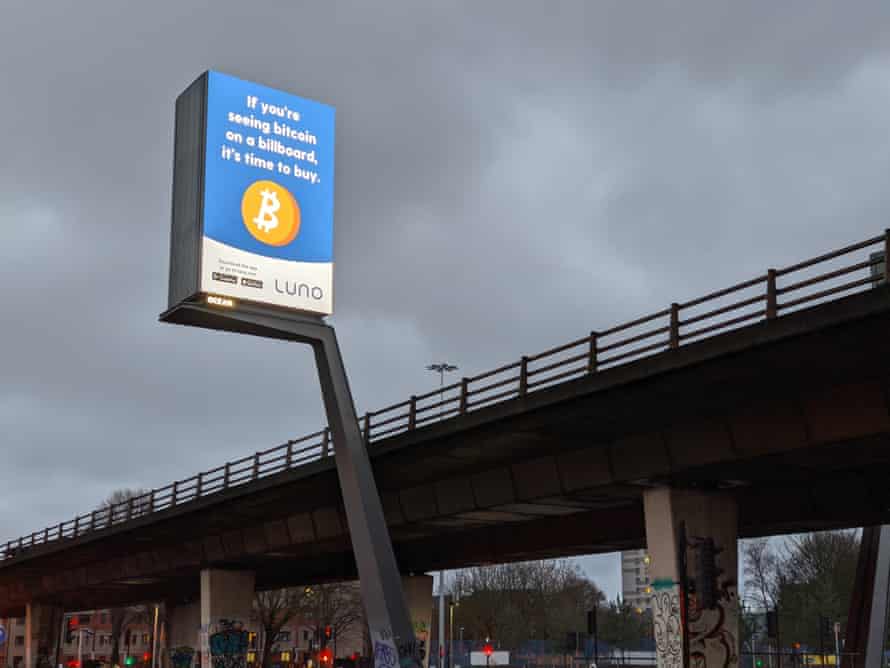Plunging prices and lost life savings have confirmed for many that the blockchain dream was just too good to be true. Now, it may struggle to reach past highs.
Even if you do not live and breathe crypto, you may have noticed that there is some turmoil in the industry. There were eye-catching headlines about missing apes and collapsing stablecoins are some of the indications of the chaos. What is happening?
How Did The Crypto Market Unravel?
Just like many other things: slowly, then all abruptly. For example bitcoin, the original crypto is responsible for nearly a third of the value of the industry. The cost of one bitcoin has been plunging gradually since the end of March, alongside the wider malaise in the technology space.
It makes sense: a bitcoin investment is, in some way, a bet on the possibility of more technological upheaval, just like the buying of any other tech stock. With a surge in inflation chocking off the post-pandemic growth on both sides of the Atlantic, together with a vague sense that irrational exuberance has resulted in an overvaluing of tech generally in the past several years, the entire industry started dropping.
Then in early May, the dam broke violently. Within a week, it plunged more than it had in the preceding month. The main cause was contagion from the catastrophic failure of another crypto project, Terra, which was at some point valued at over $50 billion and ended the week nearly worthless.
As Terra crumbled, so too did the other cryptos. First, similar projects saw their values drop, as investors feared they would follow, then, the panic dominated the general industry, and caught up with the blue-chip tokens, including bitcoin.
It took until mid-May for that crash to stop. Although the market has regained some form of stability, it does not show any signs of returning to the levels near its highs of last month. Thus, we might be heading into a crypto winter. That is the view of the optimistic people while the pessimists say that this is the beginning of the end.
Was The Drop Connected To The Troubles In The Normal Economy?
Maybe it is related. Tech stocks have been crushed significantly in recent months, with high inflation now undercutting the appeal of high-growth, low-profit investments and a series of punishing revelations from the biggest firms raising fundamental questions about the limits to their possible expansion.
The Bitcoin fans may promote an image of their currency as a sort of ‘digital gold’, with a limited supply that makes its function as an effective hedge against inflation. But practically, when inflation rises, bitcoin tumbles, and as growth prospects diminish, so too does the chance for a digital revolution.
Apart from that, the crypto economy appears disproportionally pushed by the retail investors, who treat the industry like a halfway house between conventional day-trading and straightforward gambling. It is a highly risky way of investing cash. As the costs of living rise, these investors might be forced to liquidate some of their holdings, pushing the industry even further into the red zone.
What Happened To Terra?
Terra was a project that was originally meant to make a stablecoin: a crypto token that has a fixed value of, normally, one US dollar.
Stablecoins are nothing new. Tether and USDC are the most popular stablecoins in the industry and they operate effectively as banks. People give them money and they get stablecoins in return, which can at any point get cashed in for money once more.
But, the ‘reserve-backed’ model has issues – mostly, that you need to trust the firm behind the stablecoin to keep the money safe and readily accessible, and not put it all on red in Las Vegas trying to make a quick profit using other people’s money.
In all of this, the largest winners appear to be the corporate backers: venture-capital funds and various successful startups. The anathema to the crypto industry is ‘just trust us’. In that context, there has long been a push for a new kind of stablecoin, one that will manage to maintain its value algorithmically instead of through the action of bankers.
Terra was one of those trials: two currencies, luna is supposed to float freely while terra is expected to always have a value of $1. Luna can always get turned into terra at a value of $1. Thus, if the cost of terra gets too high, the luna owners are incentivized to print more.
On the other hand, terra can always be turned into luna at a value of $1. Hence, in case the cost of terra gets quite low, the terra holders are incentivized to destroy the currency to raise its price. Nonetheless, there is a problem since the system works only if luna has any value at all.
For some time, it did, due to an aggressive offer to pay 20% interest on savings held using the currency. Then, amidst the crash, as investors started to pull their money out to cover losses in some other places, it suddenly did not.
It triggered what is known as a ‘death spiral’, as the investors turned terra into luna, which lowered the price of luna, meaning that the next redemption lowered the price of luna further, and so on. Within a few weeks, the value of the luna coin dropped from $80 to nearly a thousandth of a cent. The experiment was now over.
One old financial adage states that when cab drivers began talking about stocks, it is time to sell. That was recast into a plucky marketing message by Luno crypto exchange early in 2021.

Who Are The Winners And Losers?
At one level, the answer is simple: the winners are those who sold their crypto holdings in early April, while the losers are those to whom they sold them. It is a normal occurrence in the industry that there is even a rallying cry for the ones left standing when the music stops.
“HODL” (Hold On for Dear Life) – appears to be an implicit promise that the boom times will come around once more and only those who never panic and sell at the bottom will make a significant profit in the next phase of the cycle.
However, there are distinctions. Those who held blue-chip cryptos like ethereum and bitcoin have just lost around half their value from the peak, while those who acquired ‘shitcoins’ – the low-effort projects where nearly everyone involved agrees that the goal is just to buy low and sell high, and leave someone else picking up the pieces – have lost a lot more.
In that context, those who managed to cash out into one of the stablecoins that managed to survive the turmoil are in nearly as good a position as those who turned their crypto into cash.
The same case holds in other sectors of the economy: in case you acquired a “Bored Ape” NFT at the peak of the market, you might have lots of trouble selling it for almost what you paid for it. However, it is still quite easy to resell it for over £100,000. In another case, a screenshot of Jack Dorsey’s first tweet on Twitter that was bought at $2.9 million is not failing to attract a buyer at $14,000.
Nevertheless, the biggest winners in all of that appear to be the corporate backers of the industry: venture-capital funds like Andreessen Horowitz and many successful startups that rode on the repeated boom/bust cycles. The only thing that is better than buying low and selling high is allowing yourself to print for free the thing that everyone else is now trying to buy.
Does It Mean The Underlying Technology Is Inconsistent Too?
Everything in the crypto space relies mostly on a few shared innovations, primarily the concept of a blockchain, which is a decentralized ledger that tracks ownership of digital assets without handing control of the network to any person or organization.
The other common aspects include ‘proof of work’, a means of securing a blockchain by needing lots of energy to get burned each second to economically dissuade the attackers from attempting to break the system, and the use of cryptographic ‘wallets’, enabling the assets to be held in a manner that prevents any transactions without providing the secret key of the account holder.
All of these technologies have come under massive criticism in their particular rights. For example, proof of work is responsible for the massive carbon footprint of the bitcoin network, which is equivalent to that of the whole of Thailand, while the blockchain itself works as little more of a massively slow and inefficient database for any instance where decentralization is not the main benefit.
Nonetheless, the technologies appear to be incredibly powerful in some scenarios. Any scenario where a government may attempt to stop economic activity, for example, becomes significantly hard to enforce when there is no centralized body to enforce these rules.
It may include activists attempting to get funding to promote democracy in nations with strong capital controls – but also ransomware vendors extorting payments from hospitals from countries without extradition agreements.
Will The Recent Crypto Crash Have Ramifications For Conventional Financial Institutions?
Thankfully, it looks unlikely for now. The conventional financial institutions have mainly kept away from the crypto industry, and when they have touched it, they have treated it as a majorly high-risk investment opportunity. Even if the whole industry disappeared overnight, the avenues of contagion would be quite limited.
In that context, the knock-on effect would have a massive hit on some conventional stocks and the investors in venture capital funds like Andreessen Horowitz’s recent $4.5 billion round of investment in crypto firms would eventually get wiped out, but systemic effects would be highly unlikely.
For now, the crypto economy is worth more than $1 trillion, and such a huge amount of wealth cannot disappear without resulting in severe pain in the real world, even if it does not cause a Lehman Brothers-style moment of banks failing. It might result in a recession, or spark another wave of more conventional issues like bankruptcies, mortgage foreclosures, and insolvencies.
Can Crypto Bounce Back?
The crypto industry has survived many catastrophic crashes before. That is what sparked the most recent conversation about a ‘crypto winter’: it might be bad for now but winter comes before spring. The main hope is that the investors just have to sit this one out and wait for the market to thaw eventually.
In case there is a reason for pessimism, it is that this time might be different. Cryptocurrency has mostly grown through finding bigger pools of new customers. However, the latest bust might be so big and so widespread that there are few new customers available.
In the end, people holding their savings in crypto will have to sell to pay bills in the real world, and will not find anybody to sell to. In case everybody in the developed world lost money in the crypto crash or knows somebody who did, the pool of naïve cash to buy in next time around will be shallow.
For now, the work on building consumer products continues. Someone might have managed to build a ‘play to earn’ game that is fun or an NFT that millions want to own. Either way, the clock is ticking for now.

 1 year ago
87
1 year ago
87 




